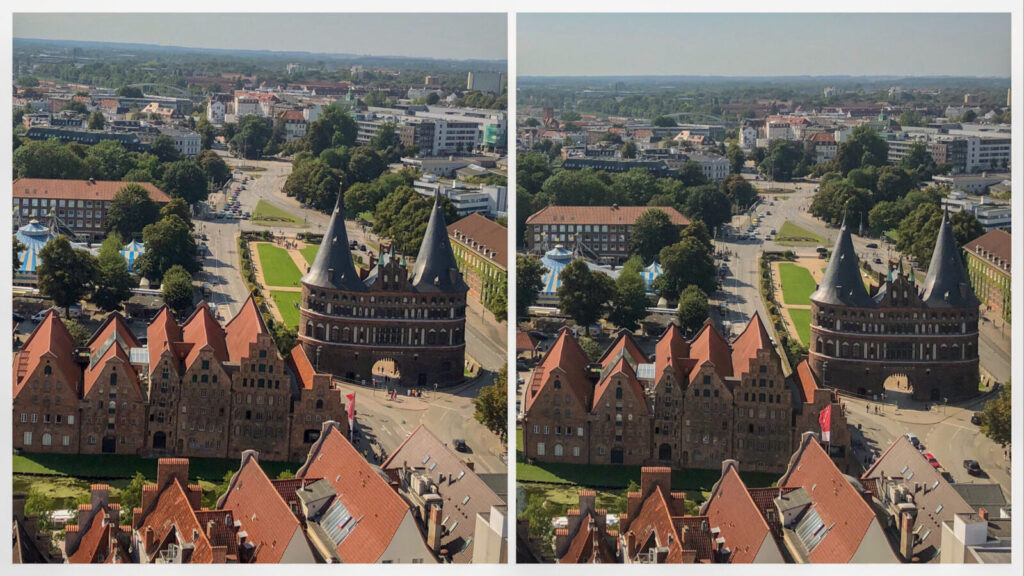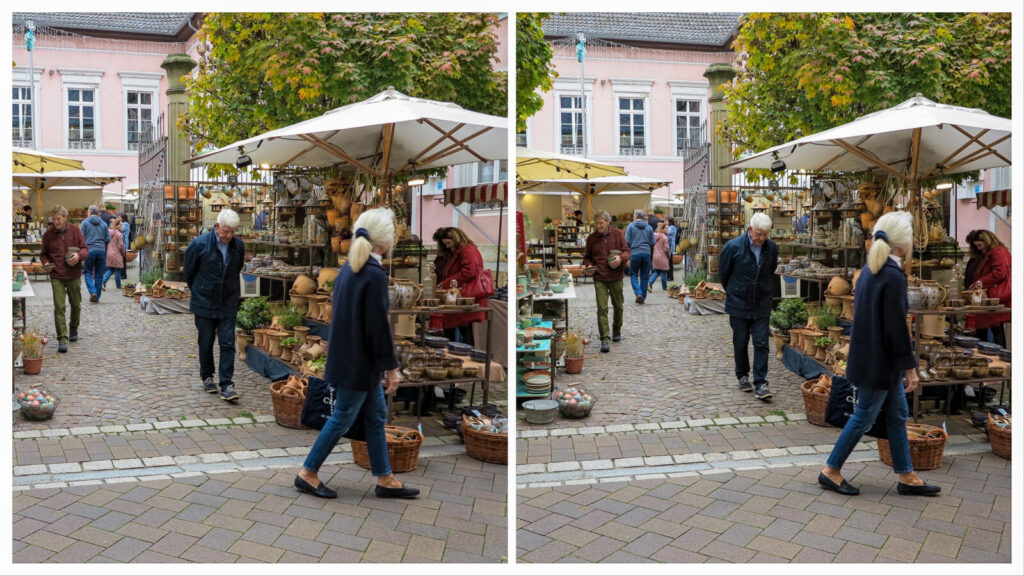Introduction
Anyone can take good stereo photos, using just a regular camera or even a smartphone. But there are a few things to consider before one starts. Therefore make sure you are familiar with the basics of stereoscopy. Below you will find a brief introduction to different methods of acquiring stereo-photographs and some basic concepts.
Simultaneous and sequential stereo photos
There are two ways of taking stereo photos, namely simultaneous and sequential. As the name indicates, simultaneous means that both photos of the stereo pair are taken at the very same moment by two lenses. On the other hand, the two photos for a sequential stereo photo are taken one after another, which can unfortunately cause discrepancies if something moves between the two shots or if you rotate the camera. These discrepancies or “rivalries” can lead to an uncomfortable viewing experience. Simultaneous stereo photography avoids these discrepancies, but requires specialized equipment. So a beginner is more likely to start with sequential stereo photos with a smartphone camera. There are also good phone apps available to assist processing of sequential stereo photographs, making it a preferred method for many beginners. At this point, I refer you to a great tutorial for beginners, instead of writing one. You will find it on Rebecca’s stereoscopy blog by clicking this link.


Basic concept
For simultaneous stereo photos there are many possible settings. You can either buy a specific stereo camera, or build your own dual camera system called stereo rig. I will be sharing more detailed posts soon, where different stereo photographers introduce their specific equipment.
With dedicated digital stereo cameras, one is able to skip the post processing and have the finished stereo image instantly available, which is easy and suitable in many cases. However, such stereo cameras with fixed lens position are limited in the way they can depict depth. If you want the ability to change the depth, you will need a dual camera stereo rig where you can adjust the distance between the lenses called baseline. While this is essential for stereo photos of distant objects or capturing extensive landscapes (the so called tele or hyper stereo photos), you need to combine the two single images acquired by the two cameras afterwards according to your desired viewing method. You can use standard image editing tools such as Photoshop or dedicated software like the Stereo Photo Maker, for image editing and assembling stereo pairs. Standard image editing tools do offer the user a greater degree of control, but can also be very time consuming. Ultimately, the choice depending on how you want to present the stereo photos.
We will be sharing articles that will hopefully serve as a guide for different aspects of modern stereo photography. The articles will provide information on getting started (tutorials and support), and cover different methods and techniques of acquiring stereo photographs. We will also list all of them on the blog, where you can always find the latest content at the top. If you would like to discuss your stereo photography equipment or techniques, please don’t hesitate to send a message to pascal@stereosite.com.

